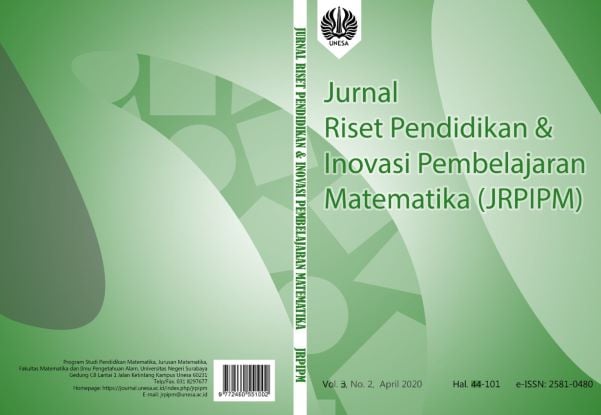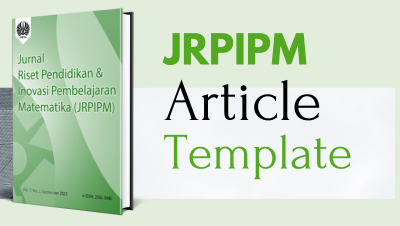The Profile of Horizontal and Vertical Mathematization Process of Junior High School Student with High Mathematical Ability in Solving Contextual Problem of Fraction
DOI:
https://doi.org/10.26740/jrpipm.v3n2.p52-60Keywords:
(mathematization process, fractions, contextual problem, mathematical ability)Abstract
Knowing the mathematization process was important for teacher. In solving problem, students were using their mathematization process. This research aimed to describe the horizontal and vertical mathematization process of junior high school students with high mathematical ability in solving contextual problem of fraction. This research was descriptive qualitative research. The research subjects was determined by mathematical ability test (TKM). Thirty four students of chosen class were given mathematical ability test (TKM). Then, they were divided into three groups based on the ability which were high ability, medium ability, and low ability group. Researcher took one subject from high ability group to be research subject. Then, researcher gave the profile mathematization process test (TPPM). The semi-structured interview was utilized to invstigate the answered of TPPM. The result of this research were: the high mathematical ability subject passed through all of activity in horizontal mathematization such as; identified the mathematical concept that is relevant to the problema; represented the problem in different ways; found the relations between problem language and the formal mathematic symbol; found the regularities, relations, pattern in problem; transfered the problem into mathematical model. The high mathematical ability subject also passed through all of activity in vertical mathematization such as; used the variety of different representation; used symbols, language, and formal mathematical process; made adjustments and development of mathematical models, combined, and united various models; created a mathematical argument; and generalized.
References
Downloads
Additional Files
Published
How to Cite
Issue
Section
 Abstract views: 392
,
Abstract views: 392
, PDF Downloads: 620
,
PDF Downloads: 620
, PDF Downloads: 0
,
PDF Downloads: 0
, PDF Downloads: 0
PDF Downloads: 0






